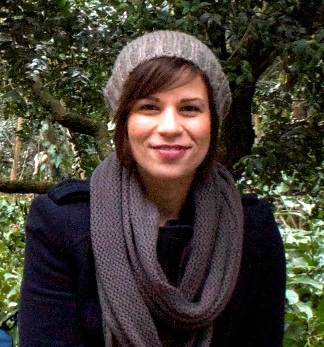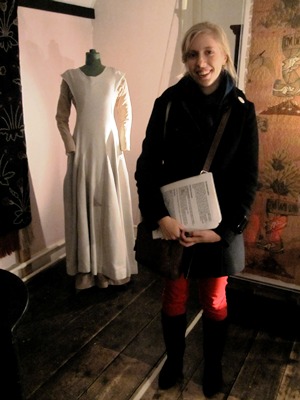Bader philanthropy supports art history scholarship
March 10, 2014
Share
By Mark Kerr, Senior Communications Officer
 Queen's in the World
Queen's in the WorldArt history PhD student Veronica Carter has a clear vision of where her research project would be if she had not been offered a Bader Travel Fellowship.
“There would be no dissertation without the Bader Travel Fellowship. I can’t express the extent to which there would be no work without this opportunity,” says Ms. Carter, who travelled to Europe and the United States in 2012-13. “Students work with their supervisors to build dream research projects that take advantage of this unprecedented opportunity.”
Ms. Carter is one of five Queen’s art historians who will present their research at a symposium on March 11. The event, in honour of Alfred Bader’s 90th birthday, celebrates Isabel and Alfred Bader’s philanthropic support of art history at Queen’s for more than two decades.
 Veronica Carter, seen here during her research trip to Paris. The Bader Travel Fellowship allowed Ms. Carter to visit galleries and collections with signicant holdings of fans from the 19th century.
Veronica Carter, seen here during her research trip to Paris. The Bader Travel Fellowship allowed Ms. Carter to visit galleries and collections with signicant holdings of fans from the 19th century.The Bader Travel Fellowship allowed Ms. Carter to visit Paris, London, Boston and Washington and find fans. She hopped from collection to collection, gallery to gallery, in order to better understand the fan’s place in 19th century French visual and material culture. “It was enlightening to see the fan really was a cultural phenomenon. It existed in so many parts of bourgeois life in the 19th century. That’s not something I would have been able to learn here,” she says.
Fellow art history PhD student Johanna Amos spent six months mostly in London in 2011-12 researching Jane Burden Morris, a Pre-Raphaelite model and wife of the eminent designer William Morris. Her research focuses on the paintings of Jane Morris by Dante Gabriel Rossetti. Ms. Amos is specifically investigating what elements of the model’s identity translated into Rossetti’s art and how contemporaries responded to it.
The written record of Morris’ life is sparse, because the correspondence she sent has been lost and she didn’t keep a diary. Ms. Amos found that interacting with the material items of Morris’ life – for example, visiting her house and seeing how she contributed to the design and decoration of the home — brought her closer to her subject. Because of her research in London, Ms. Amos believes she can make a compelling argument that Morris was a creative individual and a collaborative contributor to the artistic community, not just someone who sat there and was painted.
Ms. Amos says the Bader Travel Fellowship allowed her to complete the primary research necessary for her thesis project while working at Queen’s with a supervisor she respected, Janice Helland.
 Johanna Amos at the Red House in London where William and Jane Morris lived at one time. Ms. Amos is standing beside one of the modelling costumes that was likely worn by Jane Morris.
Johanna Amos at the Red House in London where William and Jane Morris lived at one time. Ms. Amos is standing beside one of the modelling costumes that was likely worn by Jane Morris.“Knowing that I would be able to do this project properly because of the Bader Travel Fellowship was really influential because otherwise I likely would have studied in the U.K. to be closer to the material,” she says.
The Bader Travel Fellowship was set up with an endowment several years ago to support travel for PhD students who are working on a topic that requires first-hand research in museum collections and archives. It is a competitive application process with the successful students receiving enough funding to spend at least six months travelling to research their topic.
Isabel and Alfred Bader have also established two chairs in the Department of Art: one in Northern Baroque Art, currently held by Stephanie Dickey, and another in Southern Baroque Art, held by Gauvin Bailey. Both Bader Chairs will present at the symposium.
“The Department of Art is joining forces with others all over campus to celebrate Dr. Bader’s 90th birthday. Dr. Bailey and I thought about a guest lecture, but a symposium featuring our own faculty and students seemed like a better choice. We wanted to show there’s a lot of good work going on here in the Department of Art that is supported by Bader philanthropy,” says Dr. Dickey.
David de Witt, the Bader Curator of European Art at the Agnes Etherington Art Centre, will moderate the symposium. The event will also include a third PhD candidate, Susanne McColeman, who was a Bader Travel Fellow in 2011-12.
The symposium will take place March 11 from 5:30 to 7:30 p.m. in the atrium of the Agnes Etherington Art Centre. The event is free and open to the public with a reception to follow.